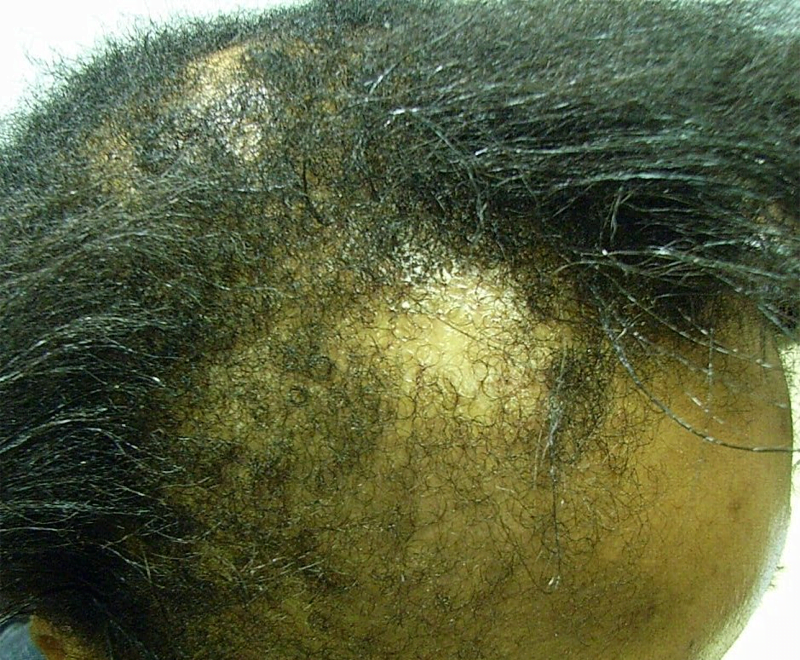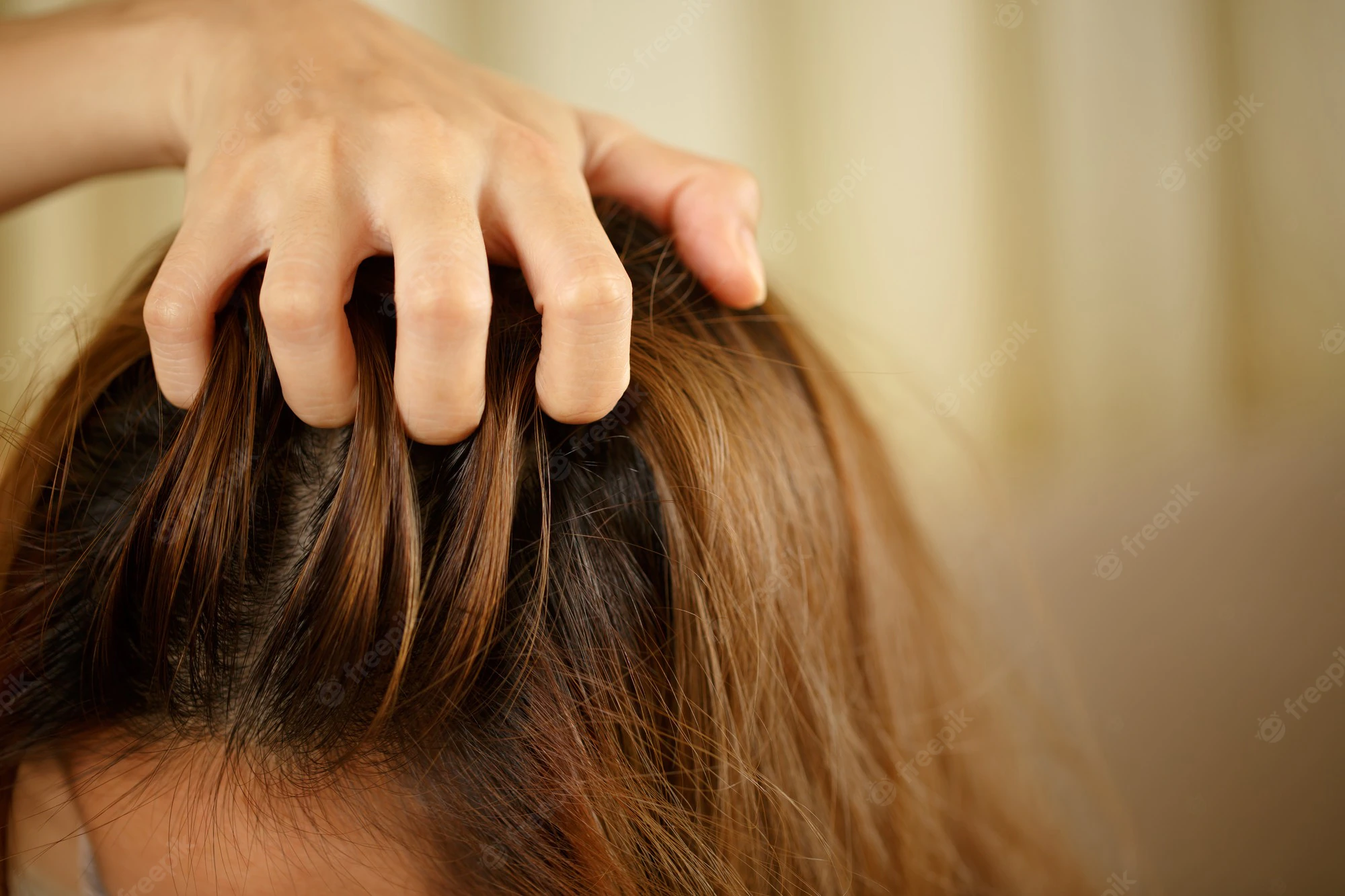
Losing your hair at any age can be distressing, but even more so when it’s premature or severe.
For many people it can be a blow to their self-esteem, and cause them to throw money at just about anything to try and save their hair.
The truth is, everyone will develop some degree of hair loss as they age.
“It happens to everyone over the course of their lifetime,” Rod Sinclair from the University of Melbourne says.
It’s just a matter of at what age — and how fast — it happens.
So what happens when your hair starts to fall out? And can it be stopped (or at the very least slowed down)?
First, a bit about hair
Hairs are tiny shafts of a protein called keratin. They are anchored in a group of specialised cells called hair follicles, which supply oxygen and nutrients to the root (or bulb) of the hair, and lubricate the hair with an oily substance called sebum.
The human body is completely covered with hair follicles, except on the palms of the hands, soles of the feet and the lips. Mostly, hair follicles are tiny, and the hairs they produce don’t grow long enough to protrude from the pore.
The areas where hairs do protrude (and are visible above the skin) include the armpits, face, around the genitals, the front of the chest, the back, and most profusely, on the scalp of the head. A scalp typically contains about 100,000 hair follicles.
Hair is in a constant cycle of growth, rest, and renewal. Hairs grow and then are shed, but because they grow at different rates they don’t all shed at once.
It takes about three years for hair follicles to produce a hair that grows, rests, falls out and then regrows, which means the scalp loses between 50 and 200 hairs a day.
When men start to go bald
In some males, the hair growth process slows right down.
The growth phase of each hair gradually becomes shorter, and the resting phase becomes longer. Eventually the hairs that are growing become so short that they barely emerge from their hair follicle.
The process begins at the sides of the head (above the temples) and at a patch on the crown, and spreads from there. As the hairline recedes backwards, the patch gets larger too.
This is known as male “pattern baldness”, or androgenetic alopecia. It’s the most common type of baldness, affecting about half of all men by the age of 50 and more than 80 per cent by the age of 70.
What about women?
Women get pattern hair loss too, but it’s less common than in men (though it’s still the most common cause of hair loss in women).
The pattern of hair loss is different, however: it tends to thin over the top of the scalp rather than result in a patch of baldness, dermatologist Michael Freeman of Bond University says.
“Often in females it will affect 50 per cent of their hair, so many women will not go truly bald, but their hair can get so perilously thin that it can become a big problem for them,” Associate Professor Freeman says.
Over 50 per cent of women have some mild hair loss as they age, and about 20 per cent of women develop moderate or severe hair loss.
It’s nature, not nurture
Despite what people may say about hair washing and hat wearing, patterned hair loss is a result of genetic and hormonal factors.
It’s the androgen hormones in our body (produced in different amounts by men and women) that we think make hair follicles shrink and stop growing in people with a genetic susceptibility.
Whether or not this happens in a particular person, at what age it starts, as well as how extensive it will be is determined by the person’s genes.
It’s thought that several genes determine how susceptible you are to losing your hair, and these can come from your mother’s and father’s side of your family.
“It’s how those genes interplay that determines what’s happening in the offspring,” Professor Sinclair says.
“It’s not an all or nothing phenomena — it’s not like brown eyes or blue eyes. It’s a quantitative trait… so the question is not will you go bald, but how much baldness will you get.”
Is there a cure?
In short: no. Hereditary, age-related hair loss is difficult to reverse.
“When you treat people with hair loss, you can stimulate partial regrowth, but you’re generally unlikely to get complete regrowth,” Professor Sinclair says.
While some people use products such as vitamin supplements or herbal remedies to counter hair loss, there is no strong evidence to show these treatments help.
There are, however, some treatments that may help slow or reduce hair loss, or stimulate partial regrowth.
“Either you try and block the [androgen] hormone action in the scalp, or you try and stimulate the hair,” Associate Professor Freeman says.
To block hormonal action and help to slow the progression of hair loss in men, a doctor or dermatologist may prescribe finasteride, a prescription-only medication designed to be taken once a day. Side effects of the drug are uncommon, but include decreased sex drive and sexual dysfunction.
When it comes to stimulating hair growth, a doctor or dermatologist might recommend minoxidil, a lotion — also now in tablet form — which has been used since the 1970s, and is available without a prescription (and suitable for both men and women).
Again, side effects are uncommon, but include scalp dryness, itching and dermatitis.
There are also a number of specific medications for women which block the effect of androgen hormones, and help to slow the progression of hair loss.
Whether or not a particular treatment is effective can depend on a number of factors, including the extent of a person’s hair loss.
“The longer it’s been going on, the more hairs are going to be irreversibly lost,” Professor Sinclair says.
Beyond medical treatments, wigs and hair pieces can be viable cosmetic options for people experiencing hair loss.
Hair transplant surgery
For people whose hair loss is too severe for oral medications or hair lotions, they may consider hair transplant surgery.
This is a procedure that involves a surgeon taking strips or plugs of hair from the back or sides of your head, and surgically placing them in areas where there is no hair, or between hairs in thinning areas.
The procedure may take several hours, and you may need several treatment sessions to get satisfactory results.
It can be costly and there is a risk of complications, so — as with any hair loss treatment — it’s important to speak with a dermatologist or GP first.
[“Source-abc”]


















